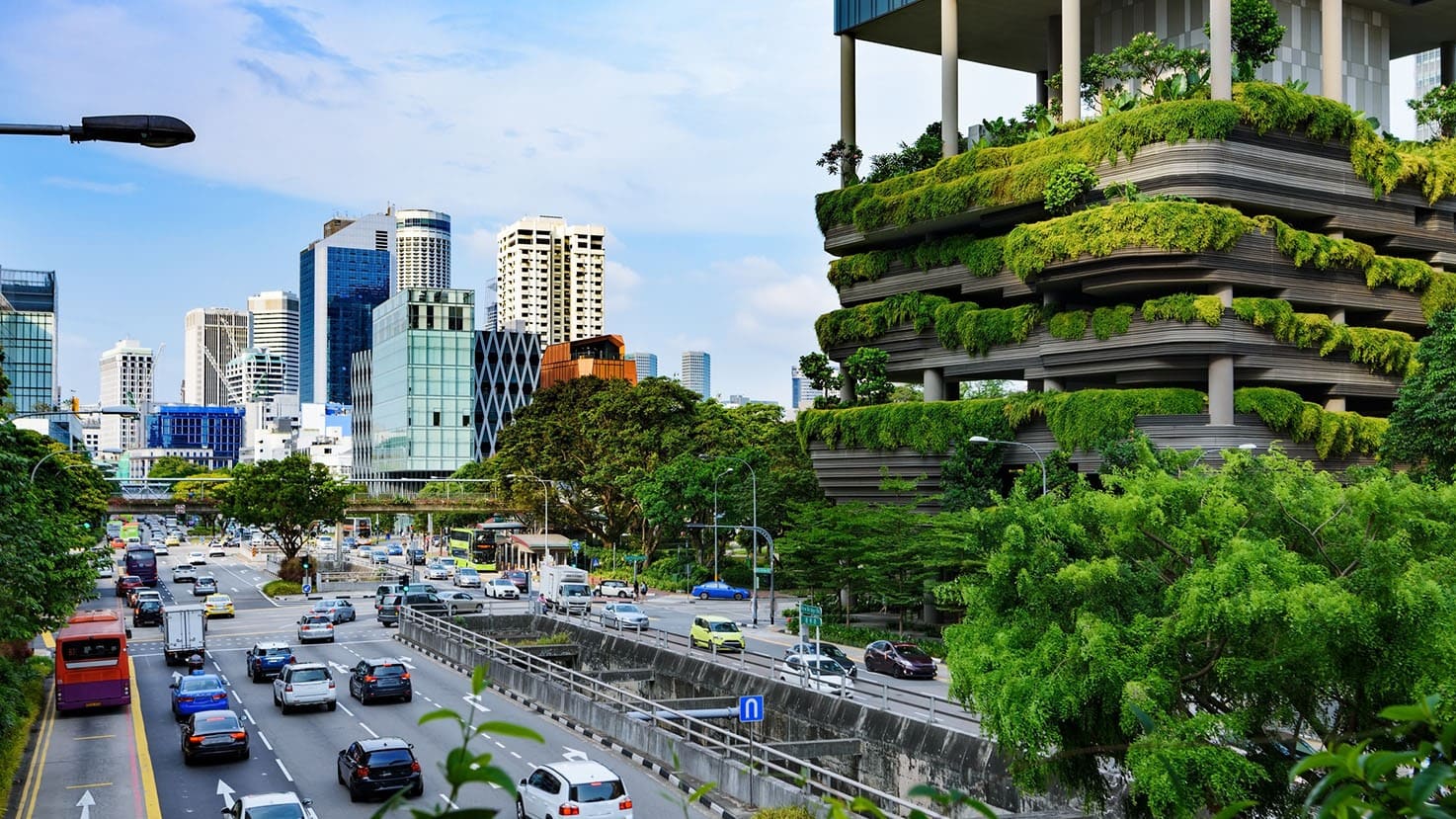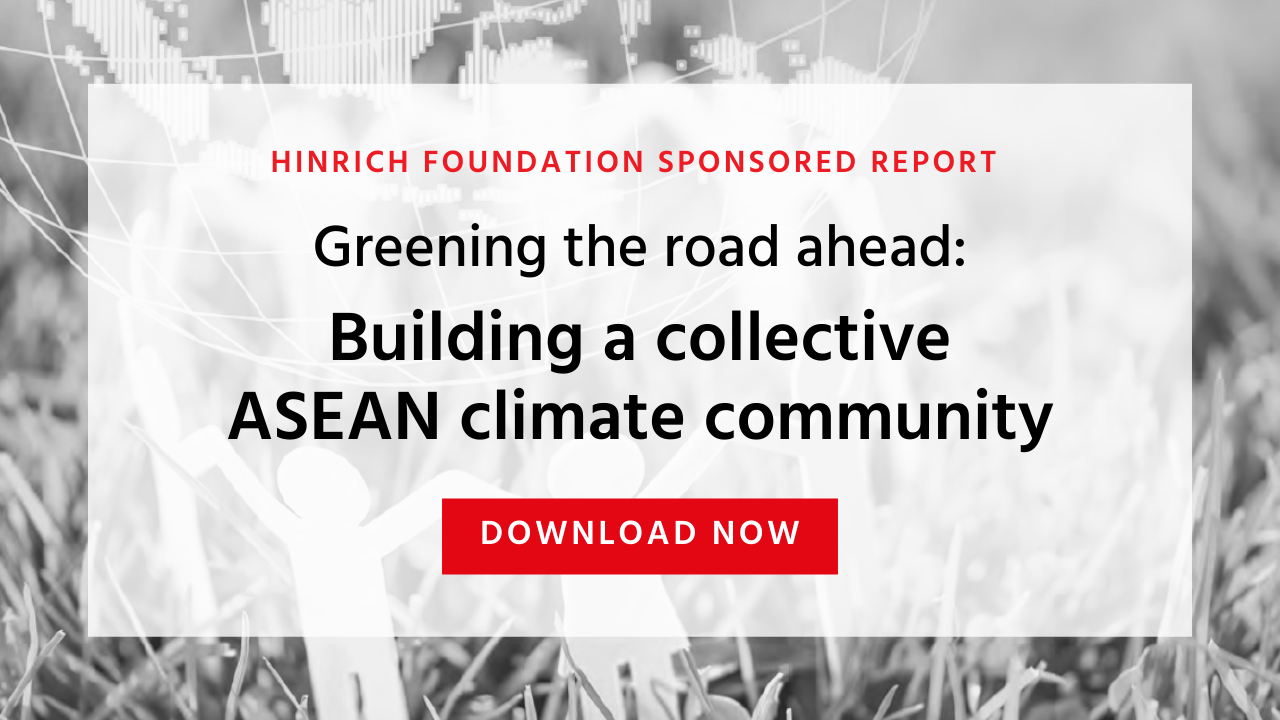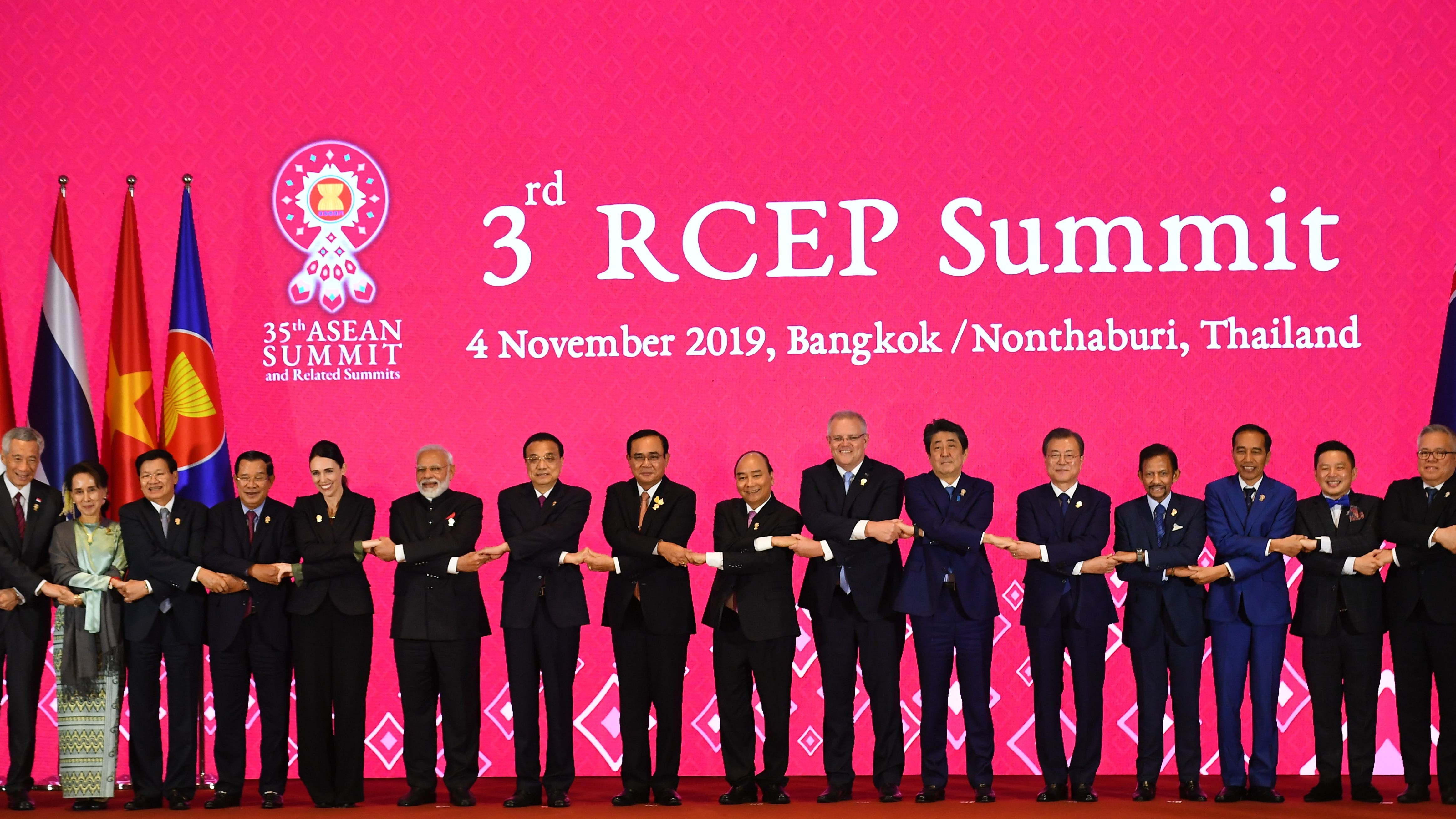The Association of Southeast Asian Nations Economic Community (AEC) was launched in 2003. It envisioned a highly integrated, inclusive, and resilient regional economy by 2025.
As an intergovernmental organization formed to promote regional cooperation, ASEAN moved into uncharted territory when it decided to establish the AEC. But there were building blocks. Over the years, ASEAN member states have signed economic agreements with each other to advance economic integration. These legally binding agreements include the ASEAN Trade in Goods Agreement (ATIGA), ASEAN Comprehensive Investment Agreement (ACIA), and ASEAN Trade in Services Agreement (ATISA), as well as other free trade agreements (FTAs) with major trading partners. ASEAN member states have also signed Mutual Recognition Arrangements (MRAs) to facilitate the greater movement of professionals and skilled labor in the region.
More recently, ASEAN signed a regional trade agreement (RTA) with its major trading partners Japan, China, Korea, Australia, and New Zealand, called the Regional Comprehensive and Economic Partnership (RCEP). This RTA, which came into force on 1 January 2022, will put together ASEAN’s existing FTAs with these five trading partners into a single regional framework to become one of the world’s largest FTAs. RCEP with its relatively straightforward 40% rules of origin (ROO) is expected to help revitalize global supply chains which had been disrupted by the Covid pandemic. There are currently plans to further institutionalize RCEP by establishing a stand-alone secretariat to oversee the implementation of the RTA and support ASEAN’s economic integration agenda.
As ASEAN member states rebuild their battered economies, it has become more important to review the key components of the AEC and examine areas that need to be expedited. For instance, as borders open, the implementation of the Master Plan on ASEAN Connectivity (MPAC) needs to be hastened. Given that MPAC’s three pillars of physical, institutional, and people-to-people connectivity are essential to advance economic integration, there should be better coordination among government agencies of member states in the implementation of MPAC and the AEC Blueprint.
With the acute shortage of skilled labor in many ASEAN member states, MRAs for professionals and skilled workers need to be fast-tracked to address these challenges. Supporting greater business mobility is just as important. One way to advance this is to adopt APEC’s Business Travel Card (ABTC) scheme which facilitates freer movement of business professionals across the Asia-Pacific Economic Cooperation region through simplified or visa-less requirements and dedicated immigration checkpoints. ASEAN should also consider building a closer working relationship with its business community as the private sector can play an important role in job skills upgrading and facilitating greater labor mobility of skilled workers.
Moreover, given the rapid changes in the post Covid environment, the AEC Blueprint needs to pay closer attention to new and emerging challenges faced by the region such as digital transformation (including the accelerated adoption of artificial intelligence), climate change, job upgrading, and reskilling. Looking ahead, the global economic landscape has become increasingly uncertain due to persistently high inflation, geopolitical tensions (including the war in Ukraine and US-China rivalry), and banking sector fragility. Against this backdrop, the AEC Blueprint should be fine-tuned to include more initiatives that support macroeconomic and financial stability.
Narrowing the development gap
The Initiative for ASEAN Integration (IAI) which was launched more than two decades ago by ASEAN to narrow the economic gap has been largely unsuccessful due to the ineffective implementation of its work plans over the years. Like the AEC Blueprint, the next IAI work plan needs to take into account the impact of the pandemic on less-developed member states and to include more relevant capacity-building initiatives, such as digital skills training and financial literacy. Growing income inequality around the world, which has been exacerbated by the Covid-19 pandemic, would mean that efforts to achieve economic convergence among member states should be taken more seriously by ASEAN policy-makers.
Rising trade protectionism
Realistic AEC by 2025 and next steps
Given that the AEC deadline is just some two years away, ASEAN is unlikely to establish a EU-style common market by 2025. In fact, this was probably never the intention of ASEAN leaders when the idea of creating an economic community was mooted more than two decades ago. Even a customs union, which is the next step up the economic integration ladder, was never on the table for discussion among ASEAN policymakers.
At the same time, there is clearly unfinished work in the implementation of the AEC Blueprint and there is an urgent need to significantly revise the blueprint to capture emerging challenges facing the region. In this regard, it will be more impactful to have more frequent reviews of the AEC Blueprint to fine-tune targets and introduce new initiatives. The ASEAN Secretariat should also be given more resources to monitor the progress in implementing the blueprint.
The AEC is often referred to as a “journey” which makes it a rather convenient way to move the goal posts and delay deadlines if they are not met. In fact, ASEAN policymakers are already starting to work on a new post-2025 AEC Blueprint, with the possibility of an even longer timeline than ten years. Even though the pandemic is now over, the global economic architecture has already changed dramatically and there will undoubtedly be future shocks that will impact the region.
ASEAN needs to be better prepared to anticipate the challenges ahead as it prepares the next AEC blueprint. The project will otherwise fail if it’s business as usual.
© The Hinrich Foundation. See our website Terms and conditions for our copyright and reprint policy. All statements of fact and the views, conclusions and recommendations expressed in this publication are the sole responsibility of the author(s).






